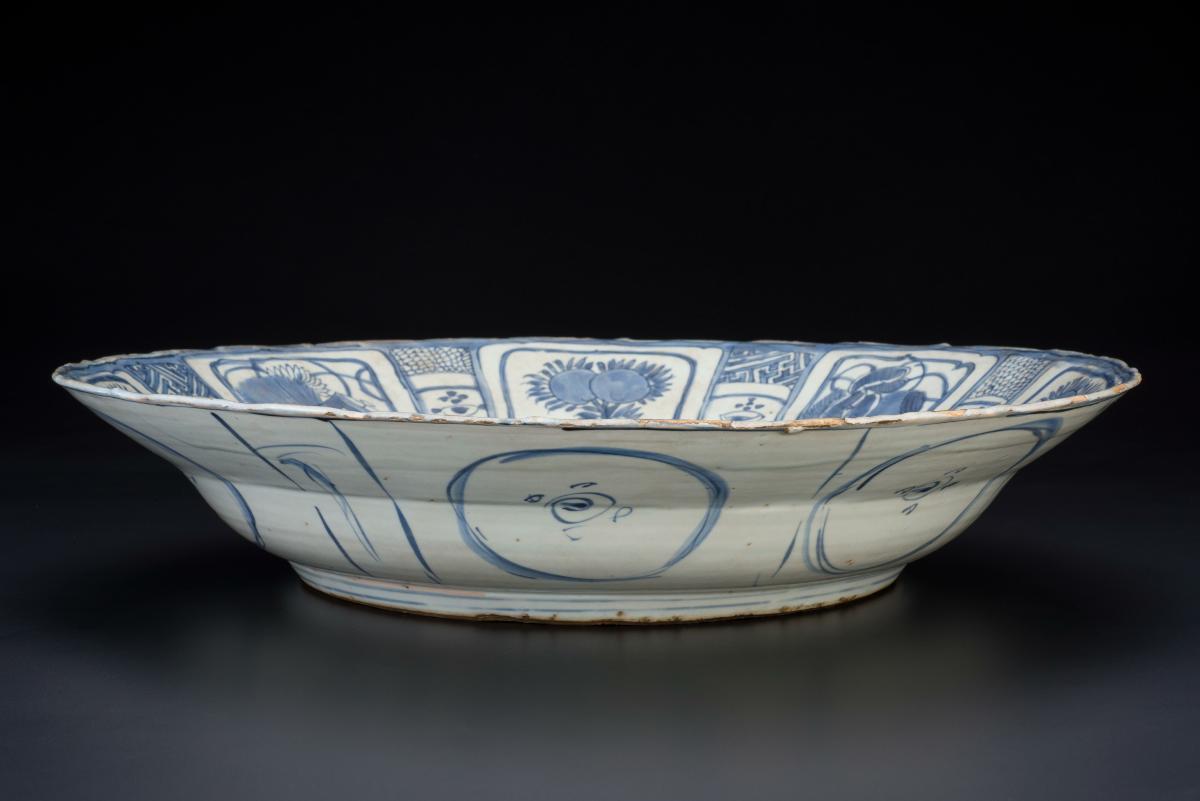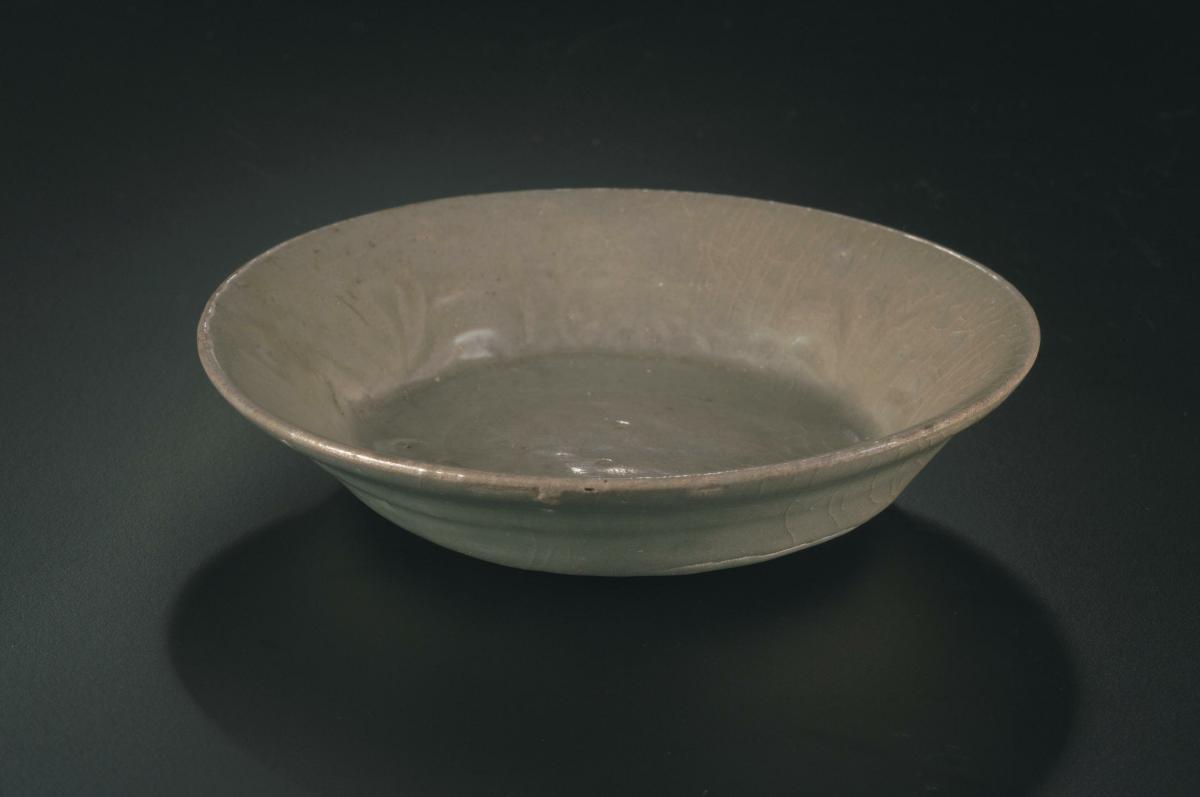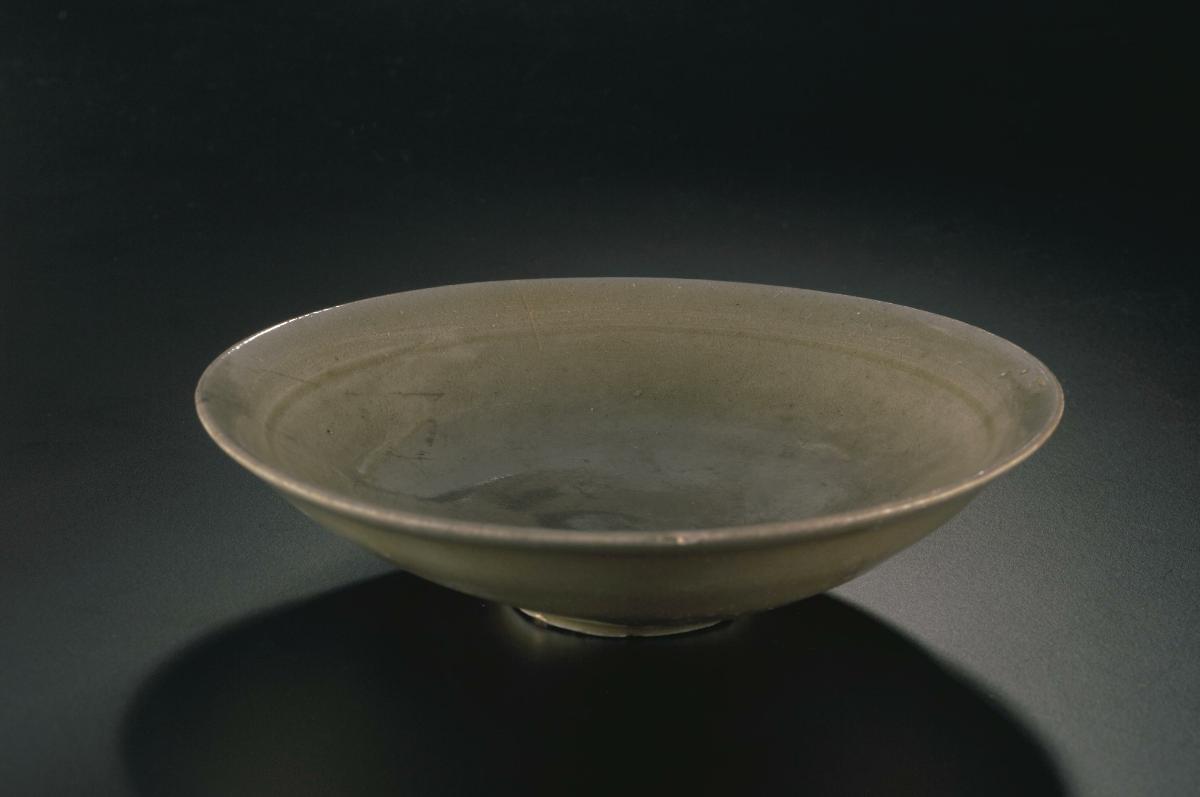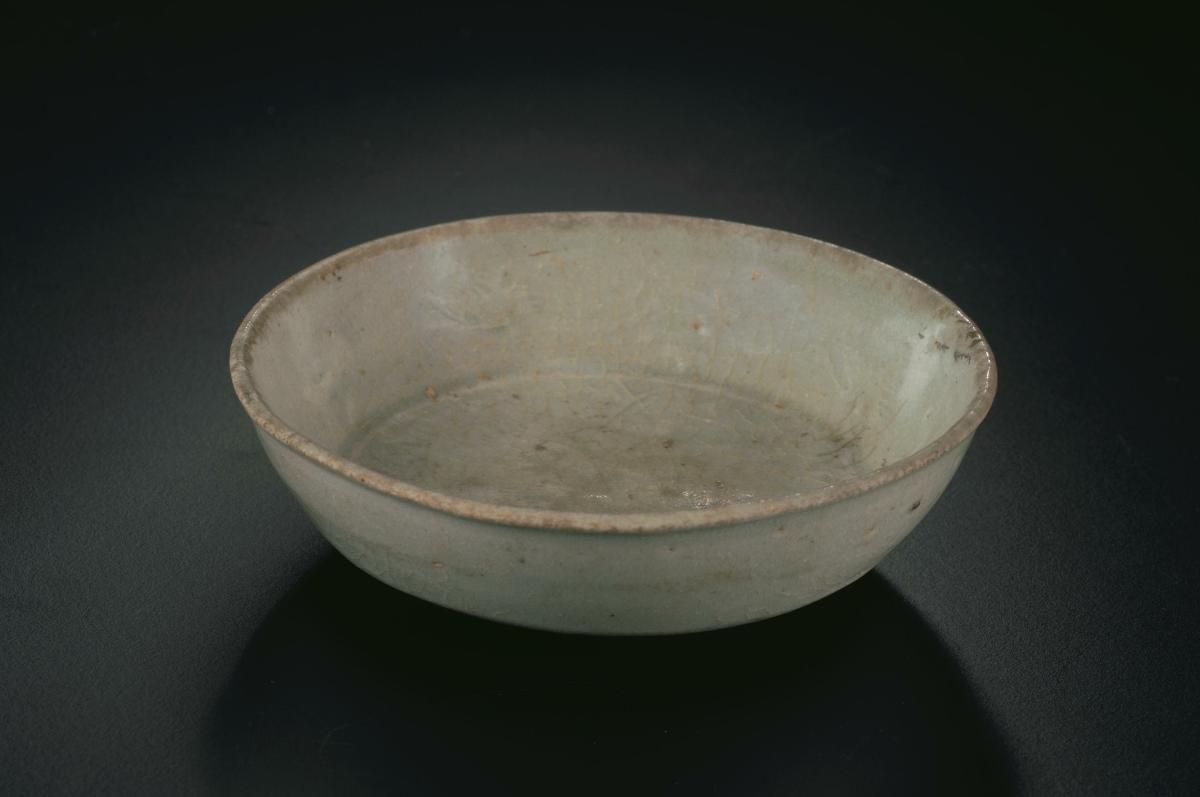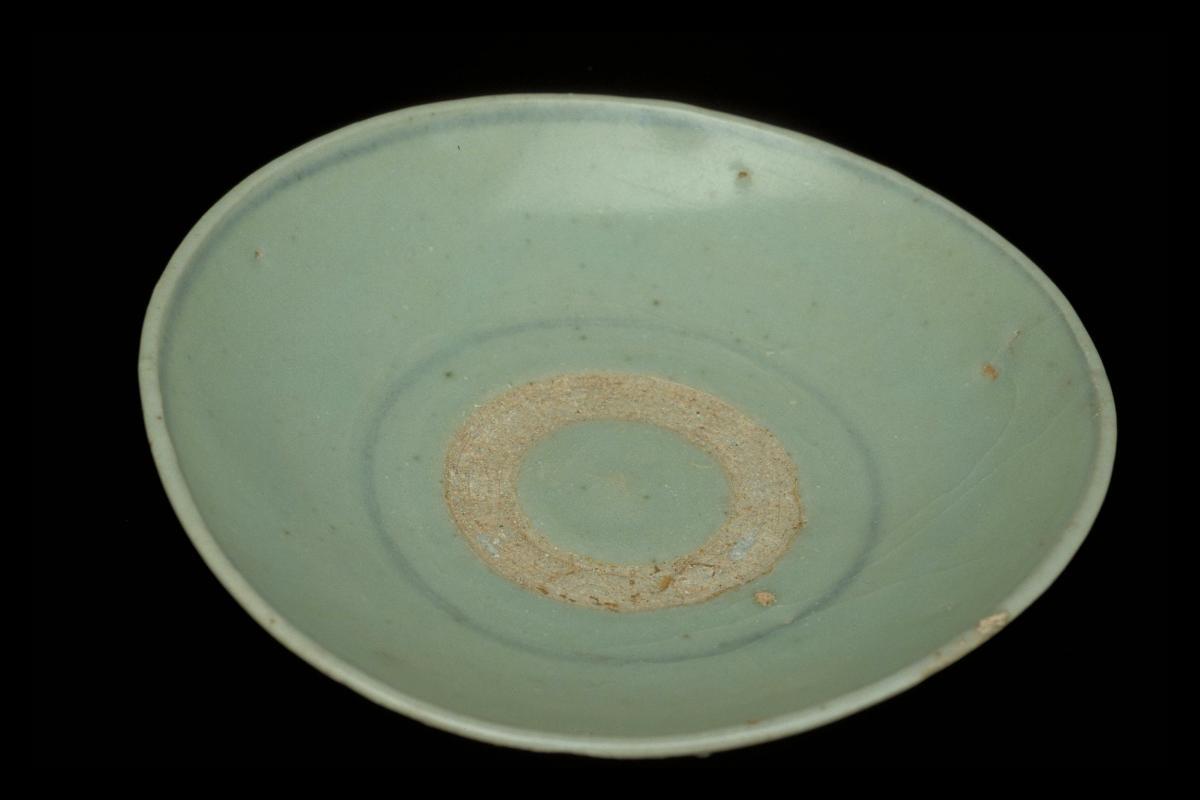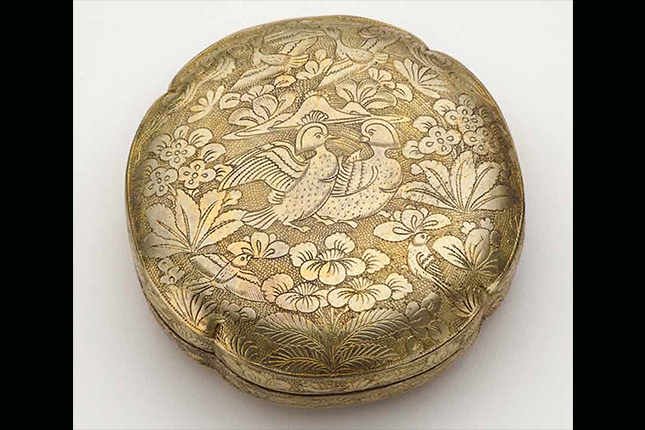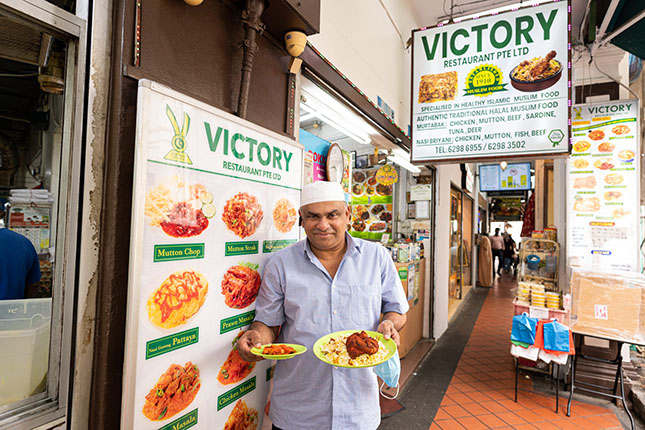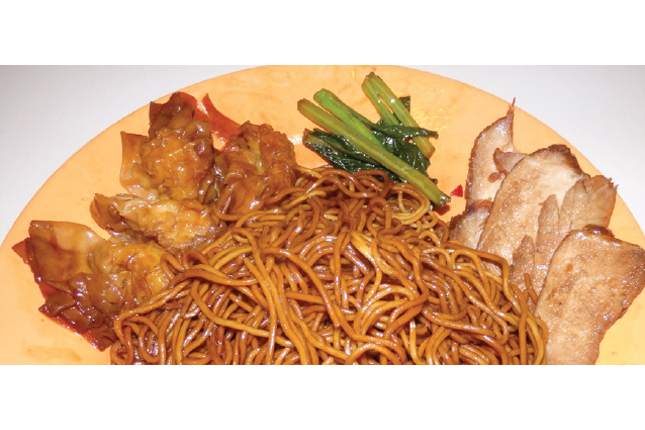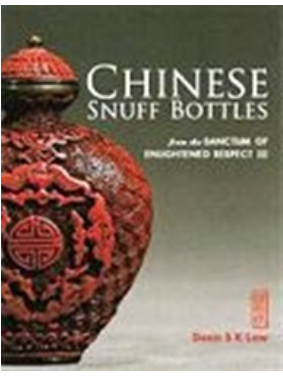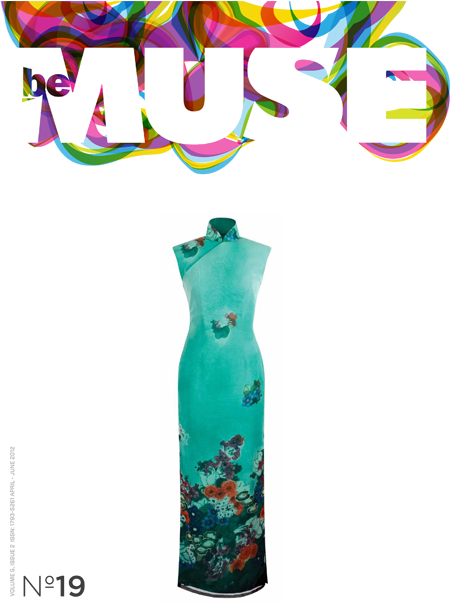This dish is of the type known as Kraak ware, which was mostly decorated in blue and white and with motifs divided into panels. This large, heavily potted, blue and white earthenware dish has eight wide and narrow radiating panels. The panels are alternately painted with peaches and auspicious symbols tied with ribbons. The narrow panels are decorated with a diaper and tassel pattern. The centre has a water scene design of geese on the rocks besides waterweeds while three more approaches in flight, and a heron in the pond. The medallion is enclosed by a band of ruyi lappet desgin.Small quantities of Chinese porcelain first found their way to Europe in the 14th century. The Portuguese were the first Europeans to establish a trading base in Macau (1557) where they traded in Chinese porcelain. Vast quantities of wares were exported to Europe during the 17th century, with the entry of the Dutch, then English and other European trading companies. Cargoes bound for Europe at this time, mainly comprised blue and white porcelain. Two of the most popular types were Kraak and ‘Transitional’ porcelain. Kraak porcelain has a thinly potted body and decoration in panels painted in a lively style. ‘Transitional’ porcelain featured more naturalistic depictions of flora and fauna as well as narrative scenes on fine quality white porcelain. The term ‘Kraak’ was probably derived from the word ‘carrack’ referring to a type of Portuguese ship that brought porcelain to Europe. It could also be derived from the Dutch word ‘kraken’ which means ‘the ability to break easily’ or the term for a style of shelves used for porcelain display in Dutch homes.During the 17th century, Delft was one of the main European centres of ceramic production. With the growing popularity of Chinese imports, Delft produced low-fired earthenware applied with a tin-oxide glaze that imitated the white appearance of Chinese porcelain. The influence of Chinese blue and white porcelain is more evident on early Delftware. After 1750, the popularity of Delftware waned with the start of high-fired porcelain production elsewhere in Europe.




